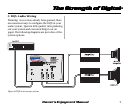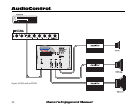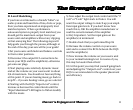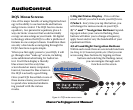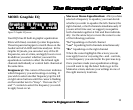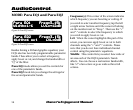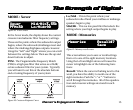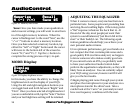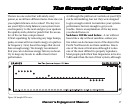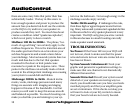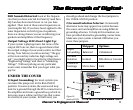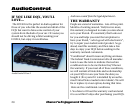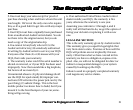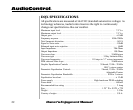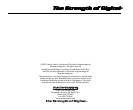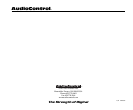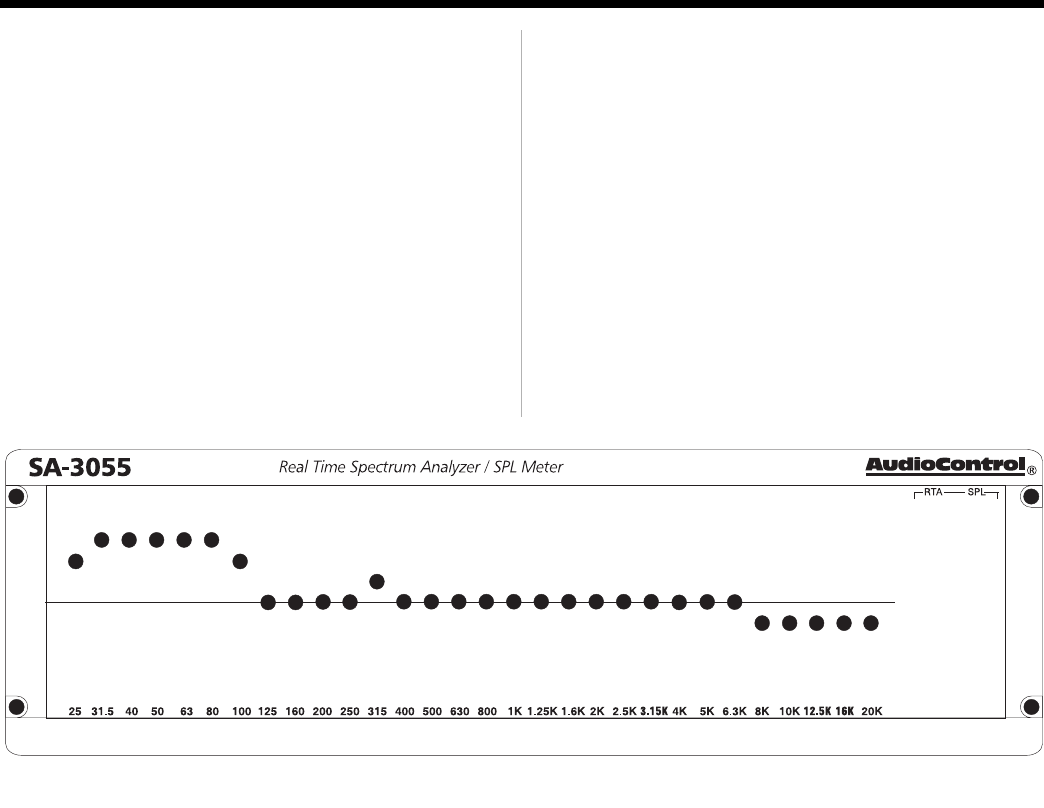
Owner’s Enjoyment Manual
The SThe S
The SThe S
The S
trtr
trtr
tr
engtengt
engtengt
engt
h of Digith of Digit
h of Digith of Digit
h of Digit
alal
alal
al
™™
™™
™
There is no one curve that will satisfy every
person, as we all have different tastes. How else can
you explain Liberace or rice cakes? The key is to
use your DQX to help balance your system from
one frequency to the next and give your speakers
the sparkle, sizzle, detail or punch that the acous-
tics of the car have compromised.
3) Start equalizing by removing any large bumps,
peaks, or areas with too much energy at a particu-
lar frequency. Next, boost the ranges that do not
have enough energy. We strongly recommend
that you cut or decrease energy before you boost.
Try to keep any boosts to +6dB or less for best
performance.
4) Although the plethora of controls on your DQX
can be intimidating, fear not they were designed
to give enough control to maximize your systems
performance but not enough to get you in
trouble. Here is an explanation of the key areas
you should focus on:
Sub-bass: 100 Hz and below - A car without
bass is like a day without sunshine…unless you
live where we do because most of the days in the
Pacific Northwest do not have sunshine. Bass is
one of the more critical areas although it is also
one of the most difficult to properly reproduce.
Most people prefer their bass frequencies to be 6 to
9 dB louder than the rest of their system, although
Figure 14: Sample RTA curve
17



